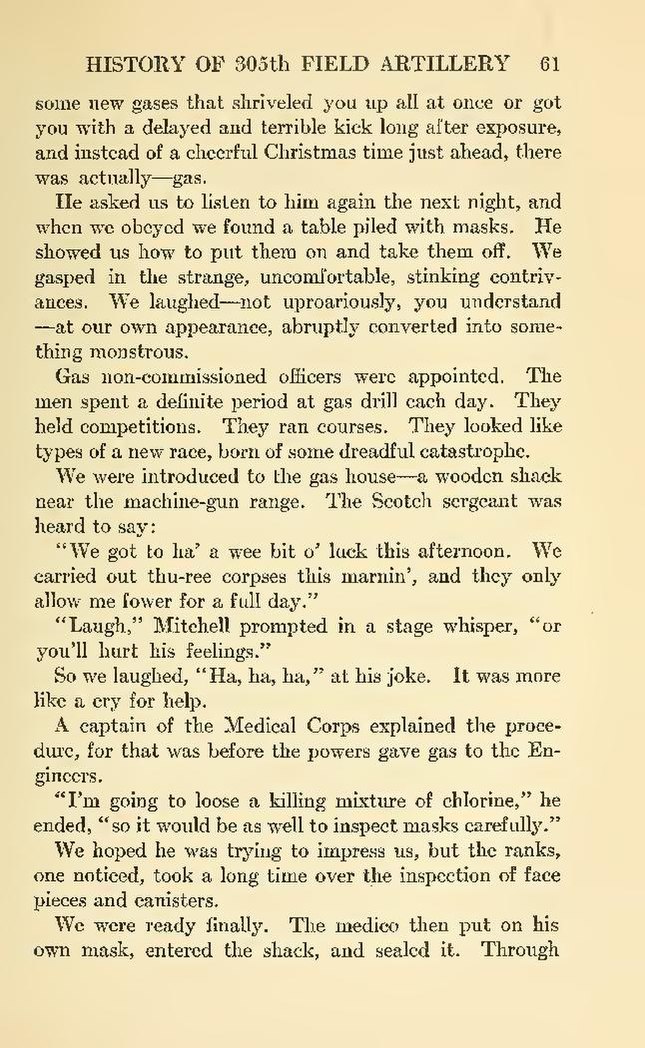some new gases that shiriveled you up all at once or got
you with a delayed and terrible kick long after exposure,
and instead of a cheerful Christmas time just ahead, there
was actually—gas.
He asked us to listen to him again the next night, and when we obeyed we found a table piled with masks. He showed us how to put them on and take them off. We gasped in the strange, uncomfortable, stinking contrivances. We laughed—not uproariously, you understand—at our own appearance, abruptly converted into something monstrous.
Gas non-commissioned officers were appointed. The men spent a definite period at gas drill each day. They held competitions. They ran courses. They looked like types of a new race, born of some dreadful catastrophe.
We were introduced to the gas house—a wooden shack near the machine-gun range. The Scotch sergeant was heard to say:
"We got to ha' a wee bit o' luck this afternoon. We carried out thu-ree corpses this marnin', and they only allow me fower for a full day."
"Laugh," Mitchell prompted in a stage whisper, “or you'll hurt his feelings."
So we laughed, “Ha, ha, ha," at his joke. It was more like a cry for help.
A captain of the Medical Corps explained the procedure, for that was before the powers gave gas to the Engineers.
"I'm going to loose a killing mixture of chlorine," he ended, “so it would be as well to inspect masks carefully." We hoped he was trying to impress us, but the ranks, one noticed, took a long time over the inspection face pieces and canisters.
We were ready finally. The medico then put on his own mask, entered the shack, and sealed it. Through
